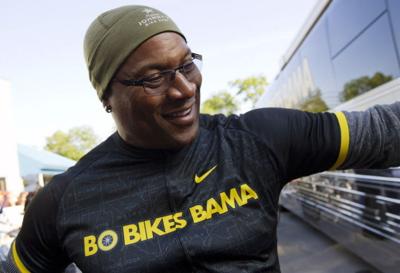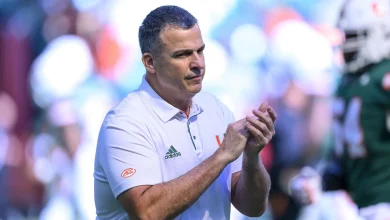While Bo Bikes Bama has boosted Alabama’s economy, Bo Jackson’s charity ride has also enhanced tornado preparedness and awareness, leaving a lasting impact on weather services.

When Bo Jackson, one of the most iconic athletes in American history, launched Bo Bikes Bama in 2011, it was in response to tragedy. On April 27, 2011, Alabama was devastated by one of the worst tornado outbreaks in U.S. history. More than 60 tornadoes ripped through the state, killing over 250 people and leaving thousands homeless. In the aftermath, Jackson, an Alabama native and Auburn legend, wanted to do something meaningful to help rebuild his home state and ensure it was better prepared for future disasters.
What started as a heartfelt gesture evolved into an annual charity ride that not only brought millions in financial support to Alabama but also significantly contributed to improving the state’s tornado preparedness and weather warning infrastructure. Now, with Bo Bikes Bama reportedly coming to an end, it’s worth reflecting on the ride’s legacy—how it shaped communities, supported victims, and changed the way Alabama responds to natural disasters.
The Origin of Bo Bikes Bama
In the weeks after the 2011 tornado outbreak, Bo Jackson watched in horror as images of devastation filled the news. Entire neighborhoods in Tuscaloosa, Hackleburg, and other towns were wiped off the map. While federal and state emergency services mobilized quickly, it was clear that rebuilding would take years—and that much of the needed support would have to come from private citizens and charitable organizations.
Jackson decided to act. He came up with the idea for a charity bike ride across Alabama, not just to raise funds but also to raise awareness. The inaugural Bo Bikes Bama ride took place in 2012, and it quickly attracted national attention. Joined by fellow athletes, celebrities, and hundreds of riders from across the country, Jackson pedaled across the state to support rebuilding efforts.
But the ride was never just about money—it was also about building resilience. Jackson wanted to ensure that Alabama would be better prepared the next time severe weather struck.
Financial Impact: Rebuilding Communities
Since its inception, Bo Bikes Bama has raised millions of dollars for the Alabama Governor’s Emergency Relief Fund. These funds were used to rebuild homes, schools, and community centers in areas hardest hit by the 2011 storms. But perhaps more importantly, the ride helped spotlight rural communities that might otherwise have been forgotten in the long recovery process.
The infusion of charitable dollars helped rebuild infrastructure that would have taken years to replace through public funding alone. In towns like Hackleburg and Phil Campbell, money from the fund supported the rebuilding of schools and storm shelters. In Tuscaloosa, funds went toward mental health services and programs for children displaced by the storms.
Beyond direct aid, Bo Bikes Bama also brought much-needed attention and tourism to these communities. Each year, the ride took a different route through Alabama, drawing in cyclists and spectators. Local hotels, restaurants, and small businesses benefited from the influx of visitors—turning the event into a temporary economic boost for participating towns.
Enhancing Tornado Preparedness and Weather Infrastructure
While the economic benefits of Bo Bikes Bama were evident, the event’s more lasting contribution may be in how it reshaped Alabama’s approach to tornado preparedness. Funds raised through the ride were used to install community storm shelters in areas that previously had none. In a state where mobile homes and rural housing are common, these shelters have already proven life-saving in subsequent storms.
Moreover, Bo Jackson’s fundraising and advocacy helped improve Alabama’s weather warning systems. Some of the money went toward funding NOAA weather radios for families without access to reliable storm alerts. Educational campaigns sponsored by the Bo Bikes Bama initiative also taught residents how to develop emergency plans and understand severe weather warnings.
In the years following the 2011 tornado outbreak, Alabama’s fatalities from tornadoes have decreased—not just because of improved meteorological forecasting but because of better community response, awareness, and infrastructure. It’s fair to say that Bo Bikes Bama played a role in that transformation.
A Celebrity Using His Platform for Good
Bo Jackson has always been a larger-than-life figure. A two-sport athlete who excelled in both Major League Baseball and the NFL, Jackson’s fame has remained strong decades after his athletic career ended. But with Bo Bikes Bama, Jackson redefined what it means to be a sports icon—using his platform not for personal gain but for the betterment of others.
Throughout the years, Jackson has consistently participated in every ride, often biking more than 60 miles alongside everyday citizens. His humility and dedication have been key to the event’s success. Unlike some celebrity-led charitable efforts that fade after the media spotlight moves on, Bo Bikes Bama has maintained momentum because of Jackson’s continued presence and authenticity.
His ability to draw other celebrities, athletes, and politicians to the cause helped elevate its profile and raise more funds. Yet, even with the added attention, Jackson kept the event grounded in its original purpose: helping Alabama recover and prepare.
The Emotional and Cultural Significance
For many Alabamians, especially those directly affected by the 2011 storms, Bo Bikes Bama became more than just a fundraiser—it was a symbol of solidarity and remembrance. Every year, riders paused to honor the victims of past tornadoes, with memorial rides and quiet moments of reflection woven into the event.
The cultural significance of the ride grew over time. Schools incorporated weather safety education inspired by the event. Local governments began to align their emergency planning cycles with awareness campaigns around the time of the ride. Even people who didn’t ride still turned out to volunteer, cheer, or simply witness the procession of cyclists making their way across the Alabama countryside.
In many ways, Bo Bikes Bama became a form of community healing—a space where loss was acknowledged, and collective strength was celebrated.
‘All Good Things Come to an End’
Now, with reports suggesting that Bo Bikes Bama may be coming to an end, many are reflecting on the legacy it leaves behind. While the annual ride may no longer continue in its current form, its impact will endure.
The storm shelters built through its fundraising efforts are permanent fixtures in dozens of communities. The weather radios, educational programs, and strengthened emergency plans have saved lives in the years since the initiative began. The economic boost to rural communities, even if temporary, helped some towns find a renewed sense of pride and attention.
And perhaps most importantly, Bo Bikes Bama has left behind a model—a template for how sports figures can meaningfully contribute to disaster recovery and preparedness. Jackson didn’t just throw his name behind a fundraiser; he stayed involved, led by example, and saw the initiative through for more than a decade.
Looking Forward
Even as Bo Bikes Bama winds down, the conversation it started about weather resilience, emergency preparedness, and the role of private citizens in disaster recovery continues. In an age of increasing climate volatility, with more frequent and severe weather events, initiatives like Bo Bikes Bama are more important than ever.
Bo Jackson has hinted that while the ride itself may conclude, his commitment to helping Alabama and promoting weather safety is not over. It’s possible that the legacy of Bo Bikes Bama will evolve into new programs or initiatives—ones that carry forward the spirit of service and resilience that the ride embodied.
Final Thoughts
Bo Bikes Bama was never just a bike ride. It was a movement born from tragedy, powered by community spirit, and led by a legend who never forgot his roots. While its conclusion may leave a void for many who participated year after year, its impact remains embedded in the very fabric of Alabama’s tornado preparedness and community resilience.
From rebuilt homes to installed storm shelters, from improved awareness to saved lives, the legacy of Bo Bikes Bama proves that sports, philanthropy, and purpose can combine to create lasting change. As Bo Jackson so simply put it, “All good things come to an end.” But in this case, the end is only the beginning of a legacy that will endure for generations to come.
Would you like a timeline or infographic summarizing Bo Bikes Bama’s milestones and impact?









